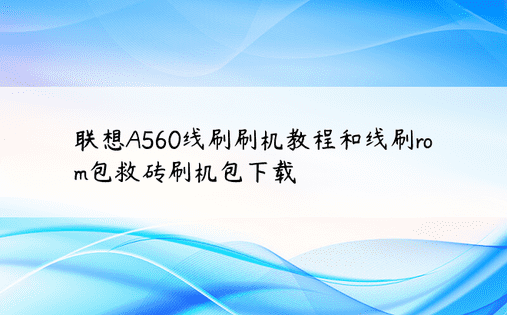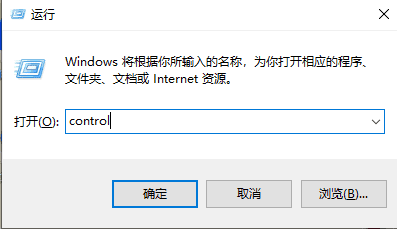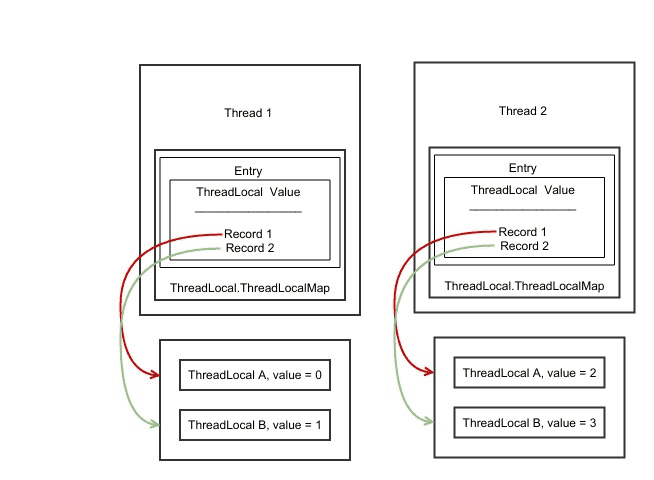https://www.gyballet.com/how-to-vc2010-win https://www.gyballet.com/zh-cn/简介 https://www.gyballet.com/shujiaw/article/details/82969394 官网:https://www.gyballet.com/
使用教程
源码如下:
#include
int main()
{
int gdriver, gmode, i, j; /*清屏*/
gdriver = 检测;
initgraph(&gdriver, &gmode, ""); /*初始化图形界面*/
for (i = 120; i <= 400; i = i + 40) /*设置起点为120,终点为400,表格宽度为40*/
对于 (j = 120; j <= 400; j++)
{
putpixel(i, j, 黄色); /*绘制点*/
putpixel(j, i, 黄色);
}
系统(“暂停”);
closegraph(); /*退出图形界面*/
返回0;
}
效果如图L:画圆:源码如下:
#include
#包括
int main()
{
initgraph(640, 480); // 创建一个大小为 640x480 像素的绘图窗口
圆(200, 200, 100); // 画一个圆,圆心 (200, 200),半径 100
_getch(); // 按任意键继续
closegraph(); // 关闭绘图窗口
返回0;
}
效果如下图: 坐标 在EasyX中,坐标有两种:物理坐标和逻辑坐标。
物理坐标 物理坐标是描述设备的坐标系。
坐标原点位于设备左上角,X轴向右为正,Y轴向下为正,测量单位为像素。
坐标原点、坐标轴方向、缩放比例不可更改。
逻辑坐标 逻辑坐标是在程序中绘图时使用的坐标系。
默认坐标原点为窗口左上角,X轴向右为正,Y轴向下为正,测量单位为点。
默认情况下,逻辑坐标和物理坐标一一对应,1个逻辑点等于1个物理像素。
本手册中未注明的坐标均指逻辑坐标。
请参阅
setorigin:修改坐标原点。 setaspectratio:修改坐标轴方向。 setaspectratio:修改缩放比例。
下面是如何表达图像:具体参见参考资料。使用预定义的常量来表示颜色
其中,离线下载链接:
由于现在有些算法是在Windows下用C语言编写的,C语言没有自己的图形界面库,所以在调试时非常不方便。相信很多使用C语言开发的朋友都会被这个困扰。所以最近我基于easyX写了一个实时绘制数据的程序。我希望它能给你一些帮助。
easyX是一个只能在windows上使用的c++图形库,一般只能在vs或vc上使用(我用的是vs)。有很多限制。如果你想用,就老老实实安装吧。软件方面,先安装vs,再安装easyX。 easyX 易于安装。
先给大家看看效果:
静态显示(无网格):
?
静态显示(带网格,网格线覆盖刻度值的负号,万岁):
动态绘图(无网格):
动态绘图(带网格):
动态绘制时,使用循环队列,然后每次都会重绘队列中的所有元素
接下来是代码:
首先是循环队列的代码:
queue.h
#ifndef _QUEUE_H
#define _QUEUE_H
//循环队列的大小
#define MAXSIZE 1000
typedef 结构队列{
int 数据[MAXSIZE];
int 前、后;
}QueueInt;
typedef 结构queueintfloat {
浮点数据[MAXSIZE];
int 前、后;
}QueueFloat;
void queueInitFloat(QueueFloat* 队列);
int insertFloat(QueueFloat* 队列,float a);
int deleteFloat(QueueFloat* 队列);
int getSizeFloat(QueueFloat* 队列);
void queueInitInt(QueueInt* 队列);
int insertInt(QueueInt* 队列, int a);
int deleteInt(QueueInt* 队列);
int getSizeInt(QueueInt* 队列);
#endif
队列.cpp
#include "queue.h"
void queueInitFloat(QueueFloat* 队列) {
队列->前面 = 0;
队列->后方 = 0;
for (int i = 0; i < MAXSIZE; i++)
队列->数据[i] = 0;
}
int insertFloat(QueueFloat* 队列, float a) {
if ((队列->后 + 1)%MAXSIZE==队列->前) {
返回1;
}
队列->数据[队列->rear++] = a;
返回0;
}
int deleteFloat(QueueFloat* 队列) {
if (队列->前==队列->后) {
返回1;
}
队列->front++;
返回0;
}
int getSizeFloat(QueueFloat* 队列) {
int res = 队列->后 - 队列->前;
如果(分辨率 < 0){
res += MAXSIZE;
}
返回分辨率;
}
void queueInitInt(QueueInt* 队列) {
队列->前面 = 0;
队列->后方 = 0;
for (int i = 0; i < MAXSIZE; i++)
队列->数据[i] = 0;
}
int insertInt(QueueInt* 队列, int a) {
if ((队列->后部 + 1) % MAXSIZE == 队列->前部) {
返回1;
}
队列->数据[队列->rear++] = a;
队列->后方%= MAXSIZE;
返回0;
}
int deleteInt(QueueInt* 队列) {
if (队列->前==队列->后) {
返回1;
}
队列->front++;
队列->前面%= MAXSIZE;
返回0;
}
int getSizeInt(QueueInt* 队列) {
int res = 队列->后 - 队列->前;
如果(分辨率 < 0){
res += MAXSIZE;
}
返回分辨率;
}
接下来是坐标系的绘制和绘图代码
绘制坐标系统.h
#pragma Once
#ifndef 绘制坐标系统
#定义绘图坐标系统
#include "queue.h"
/*
这是绘制坐标系的函数
1,轴
2。规模
3。起源
4。网格
5。相框
6。箭头
*/
//轴结构
结构轴{
int xlow, xhigh;
int ylow, yhigh;
int centerx,centery;
浮斧,ay; //压缩
int 颜色;
};
//刻度结构
结构规模{
int openflag; //是否开启
int 刻度; //缩放尺寸
int 鳞片;
int 颜色;
};
结构网格{
int openflag;
int 颜色;
};
typedef 结构坐标系 {
struct Axis轴;
struct Scale 刻度;
int Zerox, Zeroy; //坐标系原点
struct Grid 网格;
int 长度、宽度; //图片的长和宽
int 颜色; //背景颜色
int borderx,刺绣; //边界空出范围
}坐标系;
void坐标系统初始化(坐标系统* cs);
void createCS(坐标系* cs);
voidplotInt(坐标系统* cs, int* data, int len, int color);
voidplotFloat(坐标系统* cs, float* data, int len, int color);
void dynamicPlotInt(CooperativeSystem* cs,QueueInt* 队列,int color);
void addInt(QueueInt* 队列,int a);
#endif // !DrawCooperativeSystem
绘制坐标系统.cpp
#include "drawCooperativeSystem.h"
#include
#包括
#包括
#包括
#include "queue.h"
void坐标系统初始化(坐标系统* cs){
//帧初始化
cs->长度 = 1280;
CS->宽度 = 780;
//坐标轴初始化
cs->axis.xhigh = 100;
cs->axis.xlow = -100;
cs->axis.yhigh = 100;
cs->axis.ylow = 0;
cs->www.gyballet.comx = (cs->axis.xhigh + cs->axis.xlow) / 2;
cs->www.gyballet.comy = (cs->axis.yhigh + cs->axis.ylow) / 2;
int len1 = cs->axis.xhigh - cs->axis.xlow;
int len2 = cs->axis.yhigh - cs->axis.ylow;
cs->www.gyballet.com = cs->长度*1.0 / len1;
cs->axis.ay = cs->宽度*1.0 / len2;
cs->axis.color = 黑色;
//坐标原点初始化
cs->zerox = 0;
cs->零 = 50;
//刻度初始化
cs->scale.openflag = 1;
cs->scale.scalex = 10;
cs->scale.scaley = 10;
cs->scale.color = 黑色;
//网格初始化
cs->grid.openflag = 1;
cs->grid.color = 黑色;
//边界空范围
cs->borderx = 10;
cs->刺绣 = 10;
cs->颜色 = 白色;
//创建窗口
HWND hwnd = initgraph(cs->长度 + cs->borderx, cs->宽度 + cs->刺绣, EW_SHOWCONSOLE);
settrop2(R2_MASKPEN); //添加光栅看起来更好
}
int transX(坐标系* cs, float x) {
x -= cs->www.gyballet.comx;
x *= cs->www.gyballet.com;
int k = x;
如果 (x - k > 0.5)
k++;
返回k;
}
int transY(坐标系* cs, float y) {
y -= cs->www.gyballet.comy;
y *= cs->axis.ay;
int k = y;
如果 (y - k > 0.5)
k++;
返回k;
}
void createCS(坐标系* cs) {
//设置原点
int avex = (cs->length + cs->borderx) / 2;
int avey = (cs->宽度 + cs->刺绣) / 2;
setorigin(avex, avey);
//设置缩放比例和轴方向
设置纵横比(1,-1); //翻转y轴,向上为正
//设置背景颜色
setbkcolor(cs->颜色);
cleardevice();
//绘制坐标轴
setlinecolor(cs->axis.color); //设置颜色
setlinestyle(PS_SOLID,3); //线条样式:实线,宽度
线(-cs->长度/2,0,cs->长度/2,0);
线(transX(cs,cs->zerox),cs->width/2, transX(cs,cs->zerox),-cs->width/2);
//画箭头
浮动角=15/180.0*3.14159; //箭头角度
浮动len3=20;
浮点x11 = cs->zerox*1.0;
float x12 = cs->zerox*1.0 + len3 * tan(角度)/cs->www.gyballet.com;
float x13 = cs->zerox*1.0 - len3 * tan(角度) / cs->www.gyballet.com;
float y11 = cs->axis.yhigh*1.0;
float y12 = cs->axis.yhigh*1.0 - len3 / cs->axis.ay;
float y13 = cs->axis.yhigh*1.0 - len3/cs->axis.ay;
线(transX(cs,x11),cs->宽度/2,transX(cs, x12 ),cs->宽度/2-len3);
线(transX(cs, x11), cs->宽度 / 2, transX(cs, x13), cs->宽度 / 2 - len3);
float x21 = cs->axis.xhigh;
float x22 = cs->axis.xhigh - len3 / cs->www.gyballet.com;
float x23 = cs->axis.xhigh - len3 / cs->www.gyballet.com;
float y21 = cs->zeroy;
float y22 = cs->zeroy+len3* tan(角度) / cs->axis.ay;
float y23 = cs->zeroy - len3 * tan(角度) / cs->axis.ay;
行(transX(cs, x21), transY(cs, y21), transX(cs, x22), transY(cs, y22));
行(transX(cs, x21), transY(cs, y21), transX(cs, x23), transY(cs, y23));
// 绘制比例
if (cs->scale.openflag) {
int len4 = 5; //标尺的高度
float rlen = 50 / cs->www.gyballet.com, rwid = 30 / cs->axis.ay; //缩放值长宽
int 偏差 = 2; //刻度值与坐标轴
的距离字符[10];
int i = 0;
设置纵横比(1, 1); //将y轴向上翻转为负值
settextcolor(cs->scale.color); //设置文字颜色
setbkmode(透明); //背景透明
while (cs->zerox - i * cs->scale.scalex > cs->axis.xlow) {
setlinecolor(cs->axis.color); //设置刻度颜色
setlinestyle(PS_SOLID, 3); //线条样式:实线,宽度
line(transX(cs, cs->zerox - i * cs->scale.scalex), transY(cs, cs->zeroy), transX(cs, cs->zerox - i * cs->scale. scalex), transY(cs, cs->zeroy) - len4);
RECT r = { transX(cs, cs->zerox - i * cs->scale.scalex - rlen / 2), transY(cs, cs->zerox) + 偏差,transX(cs, cs->zerox - i * cs->scale.scalex + rlen / 2),transY(cs, cs->zeroy + rwid) + 偏差 };
sprintf(s, "%d", cs->zerox - i * cs->scale.scalex);
// printf("%s\n", s);
绘制文本(s, &r, DT_CENTER | DT_TOP | DT_SINGLELINE);
//绘制网格
if (cs->grid.openflag&&i!=0) {
setlinecolor(cs->grid.color); //设置网格颜色
setlinestyle(PS_DASH, 1); //线条样式:虚线,宽度
line(transX(cs, cs->zerox - i * cs->scale.scalex), transY(cs, cs->axis.ylow), transX(cs, cs->zerox - i * cs-> scale.scalex), transY(cs, cs->axis.yhigh));
}
i++;
}
i = 1;
while (cs->zerox + i * cs->scale.scalex < cs->axis.xhigh) {
setlinecolor(cs->axis.color); //设置刻度颜色
setlinestyle(PS_SOLID, 3); //线条样式:实线,宽度
line(transX(cs, cs->zerox + i * cs->scale.scalex), transY(cs, cs->zeroy), transX(cs, cs->zerox + i * cs->scale. scalex), transY(cs, cs->zeroy) - len4);
RECT r = { transX(cs, cs->zerox + i * cs->scale.scalex - rlen / 2), transY(cs, cs->zerox) + 偏差,transX(cs, cs->zerox + i * cs->scale.scalex + rlen / 2),transY(cs, cs->zeroy + rwid) + 偏差 };
sprintf(s, "%d", cs->zerox + i * cs->scale.scalex);
// printf("%s\n", s);
绘制文本(s, &r, DT_CENTER | DT_TOP | DT_SINGLELINE);
//绘制网格
if (cs->grid.openflag&&i != 0) {
setlinecolor(cs->grid.color); //设置网格颜色
setlinestyle(PS_DASH, 1); //线条样式:虚线,宽度
line(transX(cs, cs->zerox + i * cs->scale.scalex), transY(cs, cs->axis.ylow), transX(cs, cs->zerox + i * cs-> scale.scalex), transY(cs, cs->axis.yhigh));
}
i++;
}
i = 0;
while (cs->zeroy - i * cs->scale.scaley > cs->axis.ylow) {
setlinecolor(cs->axis.color); //设置刻度颜色
setlinestyle(PS_SOLID, 3); //线条样式:实线,宽度
行(transX(cs, cs->zerox), transY(cs, cs->zeroy + i * cs->scale.scaley), transX(cs, cs->zerox) + len4, transY(cs, cs->zeroy + i * cs->scale.scaley));
RECT r = { transX(cs, cs->zerox - rlen) - 偏差, transY(cs,cs->zeroy + i * cs->scale.scaley - rwid / 2),transX(cs, cs- >zerox) - 偏差,transY(cs,cs->zeroy + i * cs->scale.scaley + rwid / 2) };
sprintf(s, "%d", cs->zeroy - i * cs->scale.scaley);
// printf("%s\n", s);
绘制文本(s, &r, DT_RIGHT | DT_VCENTER | DT_SINGLELINE);
//绘制网格
if (cs->grid.openflag&&i != 0) {
setlinecolor(cs->grid.color); //设置网格颜色
setlinestyle(PS_DASH, 1); //线条样式:虚线,宽度
line(transX(cs, cs->axis.xlow), transY(cs, cs->zeroy + i * cs->scale.scaley), transX(cs, cs->axis.xhigh), transY( cs, cs->zeroy + i * cs->scale.scaley));
}
i++;
}
i = 1;
while (cs->zeroy + i * cs->scale.scaley < cs->axis.yhigh) {
setlinecolor(cs->axis.color); //设置刻度颜色
setlinestyle(PS_SOLID, 3); //线条样式:实线,宽度
line(transX(cs, cs->zerox), transY(cs, cs->zeroy - i * cs->scale.scaley), transX(cs, cs->zerox) + len4, transY(cs, cs->zeroy - i * cs->scale.scaley));
RECT r = { transX(cs, cs->zerox - rlen) - bias, transY(cs,cs->zeroy - i * cs->scale.scaley - rwid / 2),transX(cs, cs->zerox) - bias, transY(cs,cs->zeroy - i * cs->scale.scaley + rwid / 2) };
sprintf(s, "%d", cs->zeroy + i * cs->scale.scaley);
// printf("%s\n", s);
drawtext(s, &r, DT_RIGHT | DT_VCENTER | DT_SINGLELINE);
//绘制网格
if (cs->grid.openflag&&i != 0) {
setlinecolor(cs->grid.color); //设置网格颜色
setlinestyle(PS_DASH, 1); //线的样式:虚线,宽度
line(transX(cs, cs->axis.xlow), transY(cs, cs->zeroy - i * cs->scale.scaley), transX(cs, cs->axis.xhigh), transY(cs, cs->zeroy - i * cs->scale.scaley));
}
i++;
}
}
}
void setRange(CoordinateSystem*cs, int xlow, int xhigh, int ylow, int yhigh) {
cs->axis.ylow = ylow;
cs->axis.yhigh = yhigh;
cs->axis.xlow = xlow;
cs->axis.xhigh = xhigh;
cs->www.gyballet.comx = (cs->axis.xlow + cs->axis.xhigh) / 2;
cs->www.gyballet.comy = (cs->axis.ylow + cs->axis.yhigh) / 2;
int len1 = cs->axis.xhigh - cs->axis.xlow;
int len2 = cs->axis.yhigh - cs->axis.ylow;
cs->www.gyballet.com = cs->length*1.0 / len1;
cs->axis.ay = cs->width*1.0 / len2;
cs->scale.scalex =(int) (100 / cs->www.gyballet.com)/10*10;
cs->scale.scaley = (int)(100 / cs->axis.ay) / 10*10;
if (cs->scale.scalex <= 0)
cs->scale.scalex=(int)(100 / cs->www.gyballet.com);
if (cs->scale.scaley <= 0)
cs->scale.scaley=(int)(100 / cs->axis.ay);
if (cs->scale.scalex <= 0)
cs->scale.scalex = 1;
if (cs->scale.scaley <= 0)
cs->scale.scaley = 1;
cs->zerox = 0;
cs->zeroy = cs->www.gyballet.comy;
}
//直接给一组数据,将数据绘制出来
void plotInt(CoordinateSystem* cs, int* data, int len, int color) {
//找出最大最小值
int min = data[0];
int max = data[0];
for (int i = 1; i < len; i++) {
if (data[i] > max) {
max = data[i];
}
if (data[i] < min) {
min = data[i];
}
}
int range = max - min;
coordinateSystemInit(cs);
setRange(cs, 0-len*0.1, len*1.1, min-range*0.1, max+range*0.1);
createCS(cs);
setlinecolor(color);
setaspectratio(1, -1);
setlinestyle(PS_SOLID, 2);
for (int i = 0; i < len - 1; i++) {
line(transX(cs,i + 1),transY(cs, data[i]),transX(cs, i + 2),transY(cs, data[i + 1]));
}
for (int i = 0; i < len; i++) {
putpixel(transX(cs,i + 1),transY(cs, data[i]),color);
}
}
//直接给一组数据,将数据绘制出来
void plotFloat(CoordinateSystem* cs, float* data, int len, int color) {
//找出最大最小值
float min = data[0];
float max = data[0];
for (int i = 1; i < len; i++) {
if (data[i] > max) {
max = data[i];
}
if (data[i] < min) {
min = data[i];
}
}
float range = max - min;
coordinateSystemInit(cs);
setRange(cs, 0 - len * 0.1, len*1.1, min - range * 0.1, max + range * 0.1);
createCS(cs);
setlinecolor(color);
setaspectratio(1, -1);
setlinestyle(PS_SOLID, 2);
for (int i = 0; i < len - 1; i++) {
line(transX(cs, i + 1), transY(cs, data[i]), transX(cs, i + 2), transY(cs, data[i + 1]));
}
for (int i = 0; i < len; i++) {
putpixel(transX(cs, i + 1), transY(cs, data[i]), color);
}
//
}
void dynamicPlotInt(CoordinateSystem* cs, QueueInt* queue, int color) {
int len = getSizeInt(queue);
int min, max;
if (len == 0) {
min = 0;
max = 100;
}else if (len==1) {
min = queue->data[queue->front] - 10;
max = queue->data[queue->front] + 10;
}else {
int p = (queue->front+1)%MAXSIZE;
min = queue->data[queue->front];
max = queue->data[queue->front];
while (p% MAXSIZE != queue->rear) {
if (queue->data[p ]>max) {
max = queue->data[p ];
}
if (queue->data[p ] < min) {
min = queue->data[p ];
}
p++;
p %= MAXSIZE;
}
}
if (min == max) {
min = min - 10;
max = max + 10;
}
float range = max - min;
// coordinateSystemInit(cs);
if (len <= 10) {
setRange(cs, -10, 10, min - range * 0.1, max + range * 0.1);
}
else {
setRange(cs, 0 - len * 0.1, len*1.1, min - range * 0.1, max + range * 0.1);
}
BeginBatchDraw();//开始批量画图
createCS(cs);
if (len == 0) {
EndBatchDraw();
return;
}
setlinecolor(color);
setaspectratio(1, -1);
setlinestyle(PS_SOLID, 2);
int i = 0;
int k = 0;
for (int p = queue->front; (p+1)%MAXSIZE != queue->rear;p++,p%=MAXSIZE,i++) {
line(transX(cs, i + 1), transY(cs,queue->data[p]), transX(cs, i + 2), transY(cs, queue->data[(p+1)%MAXSIZE]));
k++;
if (k == 10) {
// FlushBatchDraw();
k = 0;
}
}
EndBatchDraw();
// i = 0;
// for (int p = queue->front; p%MAXSIZE != queue->rear; p++, p %= MAXSIZE, i++) {
// putpixel(transX(cs, i + 1), transY(cs, queue->data[p]), color);
// }
// for (int i = 0; i < len; i++) {
// putpixel(transX(cs, i + 1), transY(cs, data[i]), color);
// }
}
void addInt(QueueInt* queue, int a) {
if (insertInt(queue, a)) {
deleteInt(queue);
insertInt(queue, a);
}
}
最后是绘制代码
绘制静态数据代码:
#include
#include
#include
#include
#include
#include "drawCoordinateSystem.h"
#include "queue.h"
int main() {
CoordinateSystem cs;
coordinateSystemInit(&cs);
float a[1001];
int j = 0;
for (float i = 0; i < 2 * 3.14; i += 3.14 / 500) {
a[j++] = 10 * sin(i);
}
plotFloat(&cs, a, 1000, RED);
getchar();
return 0;
}
绘制动态数据代码:
#include
#include
#include
#include
#include
#include
#include "drawCoordinateSystem.h"
#include "queue.h"
void fun(void* p) {
CoordinateSystem cs;
coordinateSystemInit(&cs);
while (1) {
dynamicPlotInt(&cs,&queue,RED);
Sleep(20);
}
_endthread();
}
int main(){
queueInitInt(&queue);
_beginthread(fun, 0, NULL);
float t = 0;
getchar();
while (1) {
if (int(t+1) % 500 == 0) {
addInt(&queue, 100 * sin(t / 100));
}else
addInt(&queue,100*sin(t/100));
Sleep(10);
t++;
printf("%d\n",getSizeInt(&queue));
}
return 0;
}
这里动态绘制只写了绘制int类型的代码,float类型的其实也基本一样,复制一下就好,如果各位有需求,可以自己动手或评论或者私信,我来加上。
观看与网易云课堂的童晶老师的视屏教学
#include
#include
#include
#include
//画黄色的圆
void DrawCicles1(float x,float y,float r)
{
setlinecolor(RGB(0,0,0));
setfillcolor((RGB(255,255,0)));
fillcircle(x,y,r);
}
//画随机圆
void DrawCicles2(float x,float y,float r)
{
float h=rand()%360;
COLORREF color=HSVtoRGB(h,0.6,0.8);
setlinecolor(RGB(255,255,255));
setfillcolor(color);
fillcircle(x,y,r);
}
//画同心圆
void DrawCicles3(float x,float y,float r)
{
while(r>0)
{
float h=rand()%300;
COLORREF color=HSVtoRGB(h,0.6,0.8);
setlinecolor(RGB(255,255,255));
setfillcolor(color);
fillcircle(x,y,r);
r-=5;
}
}
//画亮一点的同心圆
void DrawCicles4(float x,float y,float r)
{
while(r>0)
{
float h=rand()%300;
COLORREF color=HSVtoRGB(h,0.9,0.8);
setlinecolor(RGB(255,255,255));
setfillcolor(color);
fillcircle(x,y,r);
r-=5;
}
}
//计算两个圆心的距离
float Dis2Points(float x1,float y1,float x2,float y2)
{
float result;
result=sqrt((x1-x2)*(x1-x2)+(y1-y2)*(y1-y2));
return result;
}
//计算两个圆是否相交
int isTowCiclesIntersect(float x1,float y1,float r1,float x2,float y2,float r2)
{
if (Dis2Points(x1,y1,x2,y2) { return 1; } return 0; } //随机生成圆的半径 int randBetweenMinMax(int min,int max) { int r=rand()%(max-min+1)+min; return r; } int main() { int width=600;//画布宽 int height=600;//画布宽 initgraph(width,height);//生成画布 setbkcolor(RGB(255,255,255));//设置背景颜色 cleardevice();//清屏 srand(time(0)); int drawMode=0;//颜色选择模式 int xArray[200];//圆的x坐标数组 int yArray[200];//圆的y坐标数组 int rArray[200];//圆的半径坐标数组 int rmin=8;//圆的半径最小 int rmax=50;//圆的半径最大 int circleNum=0;//初始化圆的数量 float x,y,r;//新圆的x、y、r int isNewCircleOk;//判断是否生成圆 int i,j; while(circleNum<200)//圆的数量最多为200 { isNewCircleOk=0; while(isNewCircleOk==0) { if (kbhit())//空格改变颜色 { char input=_getch(); if (input==' ') { circleNum=0; cleardevice(); drawMode=drawMode+1; if (drawMode>4) { drawMode=1; } } } //随机生成圆的对应坐标 x=rand()%width; y=rand()%height; r=rmin; //判断两圆是否相交,如果相交就重新生成 for (i=0;i { if (isTowCiclesIntersect(xArray[i],yArray[i],rArray[i],x,y,r)) { break; } } if (i==circleNum) { isNewCircleOk=1; } } //这里是为了随机生成的圆大一点,尽量圆是相切 isNewCircleOk=0; while (isNewCircleOk==0&&r { r++; for (j=0;j { if (isTowCiclesIntersect(xArray[j],yArray[j],rArray[j],x,y,r)) { isNewCircleOk=1; break; } } } //重新生成的对应坐标复制 xArray[circleNum]=x; yArray[circleNum]=y; rArray[circleNum]=r; circleNum++; //这里是颜色模式选择 if (drawMode==1) { DrawCicles1(x,y,r); } if (drawMode==2) { DrawCicles2(x,y,r); } if (drawMode==3) { DrawCicles3(x,y,r); } if (drawMode==4) { DrawCicles4(x,y,r); } Sleep(100);//延时0.1秒 } _getch(); closegraph();//关闭 return 0; } 如有错误,地方请指教,主要作为个人学习记录

























还木有评论哦,快来抢沙发吧~